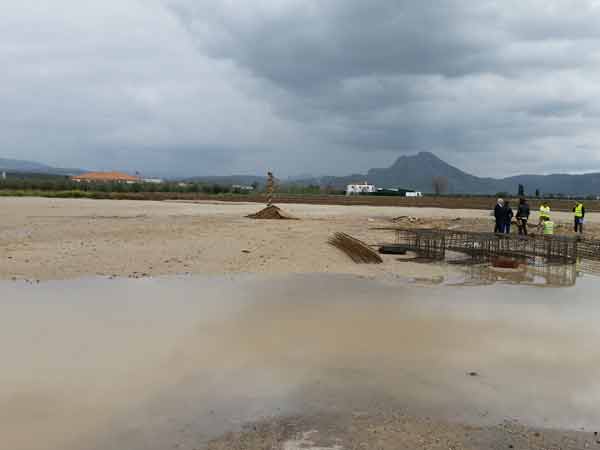Erection of the silos that will be used to store quinoa has started. Quinoa is a new cereal crop that Spanish company Alsur has introduced in Europe.
Quinoa is a pseudocereal related to beets, chard and spinach, whose demand has tripled last year. The popularity of quinoa has skyrocketed due to its pleasant flavor, quality protein and high nutritional value. Its high content in calcium, iron and essential amino acids such as lysine, histidine and arginine, comparable or even superior to other grains, made the FAO declare 2013 as “The International Year of Quinoa”.
The highest level of production of this food takes place in Peru and Bolivia. Now demand for quinoa is soaring in rich countries, as American and European consumers discover the “lost crop” of the Incas, and fewer Peruvian and Bolivians can now afford it, since they export 90% of their production.
The growing demand as well as the numerous properties of quinoa – that is considered a “superfood” – have prompted Spanish company Alsur to introduce the crop of this pseudocereal in Europe and build the first quinoa plant in the continent.
Alsur has been testing to grow quinoa in Malaga area for 2 years and the result seems to be very fruitful. “The weather in Southern Spain is perfect for growing quinoa. In Peru or Bolivia they suffer problems with insects and fungi, but the dry and hot weather we have in Spain is perfect for this crop.”
Quinoa production of the new factory Alsur in Antequera, Malaga, will be around 6 million pounds to be exported to major consuming countries like the US, China, Japan, Canada, Australia and Europe.
But the first quinoa crop will be collected in June, when they are going to open the quinoa plant, consisting of 1,500 square meters occupied in part by a mechanized process performed by Silos Córdoba, including:
- 4 silos 10.70 / 13 45º
- 2 silos 6.11 / 10 45º
- Loading and unloading handling equipment 60 tons / h.
Thus, the quinoa will go from field to reception hoppers for cleaning (remove impurities, calibrate, and go through a color sensor to insure all grains are homogeneous). Subsequently, grains must be dried to remove moisture (up to 12 percent). The last step will lead the pseudocereal to the six silos for storage, ready to be sold.
The possibilities of quinoa in the kitchen are endless. A basic recipe is to use it to replace rice or pasta, cooking the grain until soft. See more information and recipes here.
First steps on the construction site











